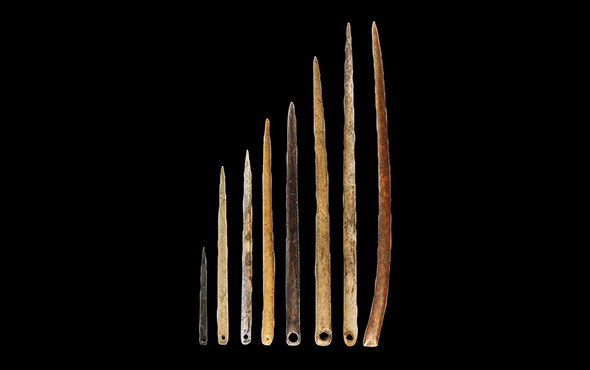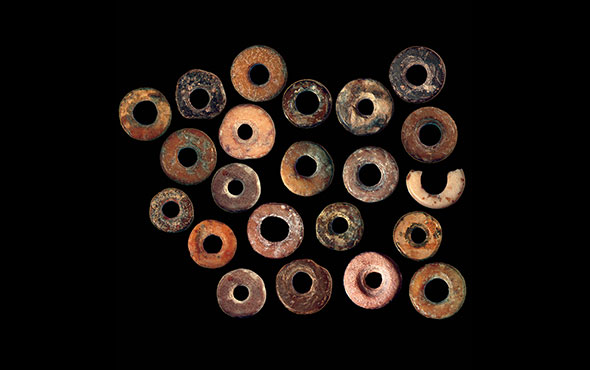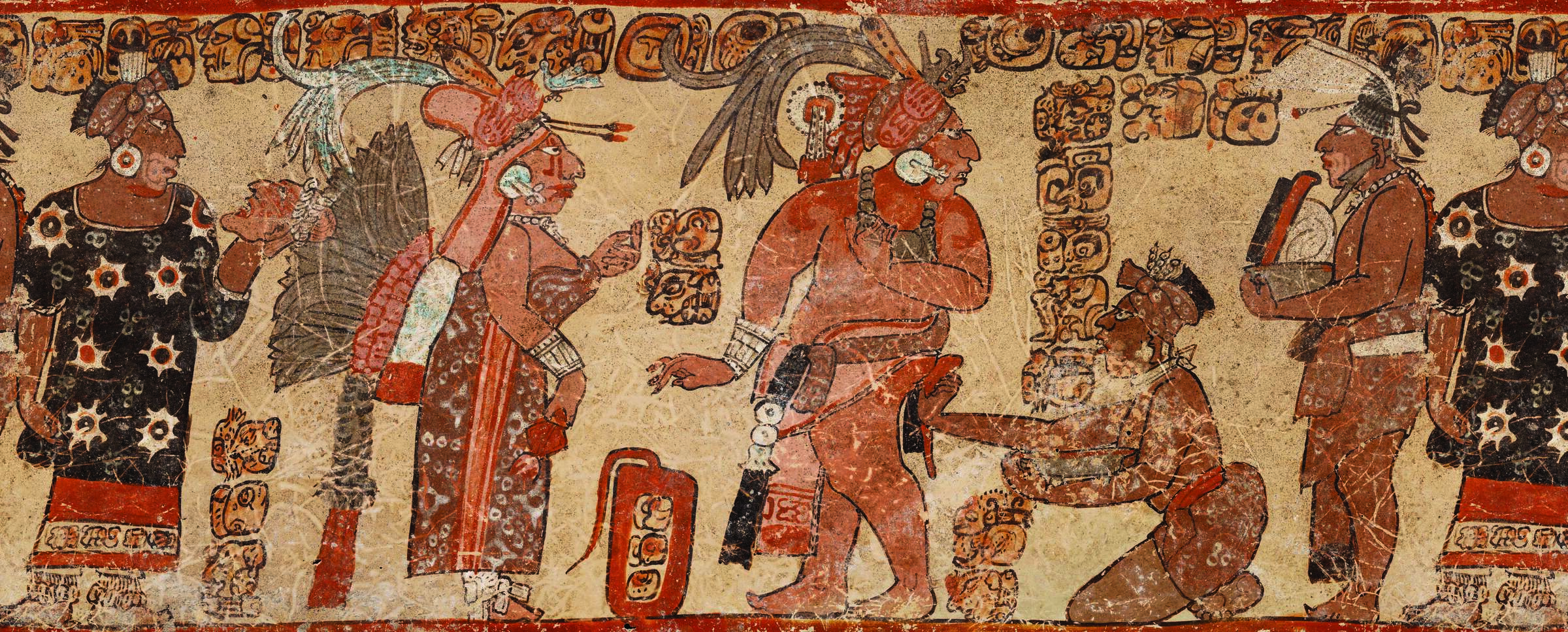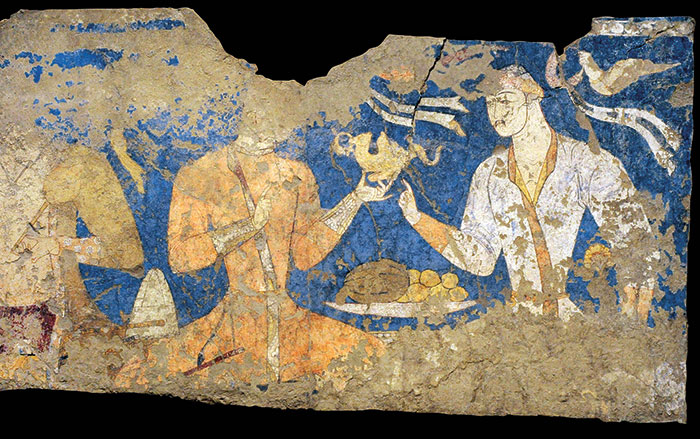
KHAKASSIA, RUSSIA—Sci News reports that Yury Esin of the Khakassian Research Institute for Language, Literature and History and his colleagues have conducted a new study of an engraved mammoth tusk recovered in western Siberia’s Tom River in 1988. The tusk, which measures nearly 28 inches long and is thought to have come from a male mammoth between 35 and 40 years of age, has been radiocarbon dated to 13,000 years ago. Esin said the lines engraved on the tusk are thin and shallow, making them difficult to decipher. “They are on the surface of a round, long, curved and heavy object which does not allow all the imagery to be seen and recognized without rotating the tusk,” Esin said. After making a 2-D model of the tusk, the researchers were able to make out images of two pairs of two-humped camels. Each camel is shown with only two legs and patches of thick fur. Single dots on two of the figures are thought to represent eyes. Esin said the researchers also spotted two legs among the lines that may be part of an anthropomorphic figure. “The comparative analysis of the stylistic features of the camel figures shows that they correspond to the age of the tusk itself, making them, at present, the oldest camel images in Asia,” he added. To read about evidence for mammoth hunting around 45,000 years ago, go to "World Roundup: Russia."










